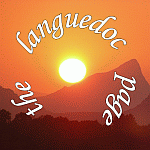 |
Articles by Beatrice Labonne FOUR WOMEN IN NAMIBIA: THE ULTIMATE CAT LOVERS HEAVEN Namibia is a very friendly place for tourists and women tourists in particular. The welcome mat was lavishly extended to us, despite the fact that we were neither movie stars nor pregnant! Namibian people did their best to be charming. However we didn’t travel to this remote corner of Africa to simply enjoy homo sapiens’ company. We visited Namibia to enjoy its glorious nature and get close and personal with its four legged denizens. Namibia is endowed with a rich and diversified wildlife. But it is its abundant big cat population which makes the country so extraordinary. No disappointment there they were always ready for their close-up, strutting their stuff with total abandon. Tourism is the fastest growing sector of the Namibian economy. One in five new jobs created are in travel and tourism. In 2006, a whooping 18% of total employment was tourism related! Big cat viewing is turning into a huge tourist attraction. Resident cheetahs and leopards are increasingly becoming the bread and butter of many posh lodges and farms. Safari tourism has fortunately not yet reached the commercialization levels of South Africa, where upscale lodges lure tourists with promises, and money-back guarantees, of meeting the “big fives” in one day! Tourism Namibian style is a more laid back affair, and certainly just as rewarding. In spite of their enormous tourist appeal, Namibian big cats don’t enjoy a heavenly lifestyle. Namibia is a farming country and for too many farmers a good cheetah is still a dead cheetah! For the sake of expediency, and for a small fee, many farmers invite trophy hunters mainly from the United States to do the job for them. Roughly speaking, the large carnivores’ lot consists of two categories. The majority are free roaming, either in the wild or in national parks or private game reserves for the lucky ones. The other lot gets free board and care, courtesy of several big cat welfare organizations. If their hunting instinct is good enough, the rescued felines will eventually be released back into the wild, albeit in protected areas. However, the chance to return to the wild is remote for most of them. Unable to cope on their own, they will remain on welfare for the rest of their lives. These “rescue and release” projects are no zoos! At Okonjima, the AfricaCat Foundation’s reserve, the cats’ playground can be as vast as Manhattan Island. Free from their hunting chores, the cats have a leisurely life. Cheetahs in particular are willing poster cats for conservation efforts. Always ready for their close-up, they subsidize the survival of their more elusive wild kin. Because they are easily tamed and sweet looking, many farms and lodges keep a couple of cheetahs as pets. Although anathema to conservationists, it makes good business sense. Tamed cheetahs make the hearts of cat-loving tourists melt. At Amani Lodge, we got up close and personal with one of the house’s cheetahs. When pat on the head, he loudly purred with so much contentment that we felt like hugging him! Kitty, kitty! We also came to know a six-month old cheetah named Sissi von Hammerstein (name of the farm/lodge). We very much enjoyed her company. This mischievous brat likes to welcome farm guests by jumping uninvited into their beds. She woke up Milliken our tour guide with a generous licking. It was obviously the only friendly wake up call that he got during our ten day trip! Our daily 6 am wake-up call made the four of us very grumpy and unsociable. I am sure that if Sissi had traveled with us, we would have been much more gracious in the morning. Actually in sparsely populated Namibia, tame or wild animals keep intruding into your space. Conservationists will certainy claim that it is the other way round! In the Ugarb region of the Damaraland desert, elephants have adapted to the dry conditions. Herds of elephants trudge the dry bed of the Ugab River often in company of opportunity-driven cows and goats. They forage for left-overs. At the White Lady camping ground on the Ugab river, we got a close encounter with the huge beasts. Since the camping ground is located on the path of the Hummers of the bush, it is obvious that it has been set up by an insomniac owner for insomniac campers. During the sleepless night we spent there, the elephants were only a couple of kilometers away and on their way. We were instructed to keep quiet in our tent, not to take pictures with flash or flicker a torch in front of the elephants. The following morning we had to sidestep heaps of fresh elephant dung near our lavatory. In many instances, we shared our camping grounds with other visitors. Black-back jackals were common companions. We could spot them sitting at short distance from our camp fire, flipping their long ears in the hope of a morsel. At the Namutoni camp in Etosha National Park, one confident jackal escorted me from the restaurant to my bungalow. I kept one worried eye on him, but he ignored me and went into the bush. In Walvis Bay, Namibia’s deep-water port, our 4-wheel-drive safari became a marine excursion. After logging thousands of miles on bone breaking gravel roads, a boat trip to catch a glimpse of the resident marine wildlife brought a welcome change. We were expecting to spot dolphins; instead we got intruding fur seals. These big goofy guys enjoy jumping on board to get fish as a reward. While they bask on the centre bench, we have to keep standing on the sides of the boat. These seals are on the payroll of the boat captain who calls them by name. There are so many seals on the coast of Namibia that food is in short supply. Wild or tamed, seals are born performers. For a payment in fish to supplement their meager diet, Namibian seals eagerly perform for tourists. In Walvis Bay, there is no shortage of volunteers. The captain had to chase away several pleading applicants. Tough life! Small mammals enjoy their close-ups too! A meerkat is a small mongoose. One of the funniest character in the Lion King animated film was Timon the hyperactive, free-wheeling meerkat. Meerkats are cute, and just as hyperactive in the flesh. They are usually pictured standing up in a sentry position, with their arms on each side of their belly. We expected that all house meerkats to be named after Timon. Well no, we met Carlos, the Ugab lodge’s pet meerkat. Carlos had been born into comfort and seemed to very much prefer lounging on a sofa than standing guard for his gang. Cheeky Carlos jumped on my laps, and I was instructed to scratch his bald round belly. Twitching of pleasure, Carlos kept nibbling my fingers with his sharp tiny teeth. Carlos is not your usual Namibian name. According to his owner, his complete name was Roberto Carlos, named after the Brazilian soccer player! We should have guessed! The Namibians are soccer fanatics. As soon as they found out that we were coming from Brazil, they fell all over themselves to impress us with their knowledge of the World Cup players. Ronaldinho is the super hero. We also tested their French soccer culture. We were equally impressed. Zidane is the most popular player by far. Although there are no touts in Namibia, poor men were found peddling their ware at the entrance of the countryside supermarkets we patronized. As soon as they came up to us, and to cut the haggling short, we told them that we were coming from Brazil and France. Immediately a lively players’ name-dropping contest started. Soccer culture, even rudimentary can be useful. Namibia has an exciting mix of people, and not all of them are soccer fanatics! The ochre skin Himba people pay no interest. We fleetingly visited one of their villages; their culture is so far away from ours that we felt like voyeurs and intruders. After all, Lula, the president of Brazil was right when two years ago he told the president of Namibia that his country was too clean for an African country! Namibia is immaculate and easily compares with Switzerland. Cleanliness and environmental protection are national missions. During our two-week safari, no one was seen throwing out garbage, or littering the roadsides. Picnic areas were nice and tidy. When trash was scattered around, a very rare occurrence, it was not homo sapiens’ doing. Baboons have yet to be convinced into signing up to a sustainable development crash course. Public toilets are spotless. No need to steal rolls of toilet paper from hotel rooms. Even bush toilets had rolls! Namibia is very safe for tourists; the only nuisance we came across was in the Namib Desert. After a short night, at dawn Milliken our guide and Mathieu our cook dragged the four of us out of our tents. The four unhappy campers were loaded into our converted bakkie, a Toyota 4 by 4 and sped up to the Sossusvlei National Park for a sunrise breakfast party surrounded by the signature red dunes. The sheer beauty of the scenery didn’t manage to sooth our murderous mood. Breakfast was a disaster: we could not get close to the jam pots as zillions of wasps were swarming over the breakfast table. The very same wasps had also invaded the bush toilets. Body and souls were unhappy. Assisted by our staff of two, our driver/guide and our cook, we traveled in style albeit not in comfort. Namibia is a big country, one and a half time the size of France. We drove some 3000 kms, mostly on gravel roads. Namibia is ideal for individual tourism or small groups all year round. July and August are cooler months but should be avoided as too crowded. Lodges are plentiful and friendly; they range from the rustic to the luxurious. The camping grounds are well organized. For thrifty tourists, camping tours are a good option, but a time consuming one too much house keeping! Self-drive tourism is well developed. But you are on your own, and may miss game viewing opportunities. Actually, in Etosha Park we noted that many cars were following us assuming that our guide knew things they didn’t! As the country is good value for money, a pampered fully accommodated and guided tour is the best option. Namibia is a semi-desert country; climate change is making it dryer still. Cattle farming have limited growth opportunity. Actually, for Namibian farmers, livestock has a broad meaning. It includes every animal grazing on their land: cows, donkeys, zebras, kudus, oryx, springboks and the likes. With less than 2 million inhabitants, there are very limited land conflicts with wildlife. Namibia is setting aside additional conservation areas and promoting sustainable tourism to offers job opportunities to the poorest segment of its population. As long as tourism doesn’t get out of control, Namibia will remain an exciting travel experience not limited to billionaire tax fugitives, pregnant movie star and cat lovers. Due to space limitation, I omitted to update you on the tax fugitives’ whereabouts. But this is another story! Useful links: www.africa-adventure.org/h Beatrice Labonne, 16 January, 2007.
This article is protected by all international copyright agreements, and reproduction is prohibited without permission of the author.
|
![]()

